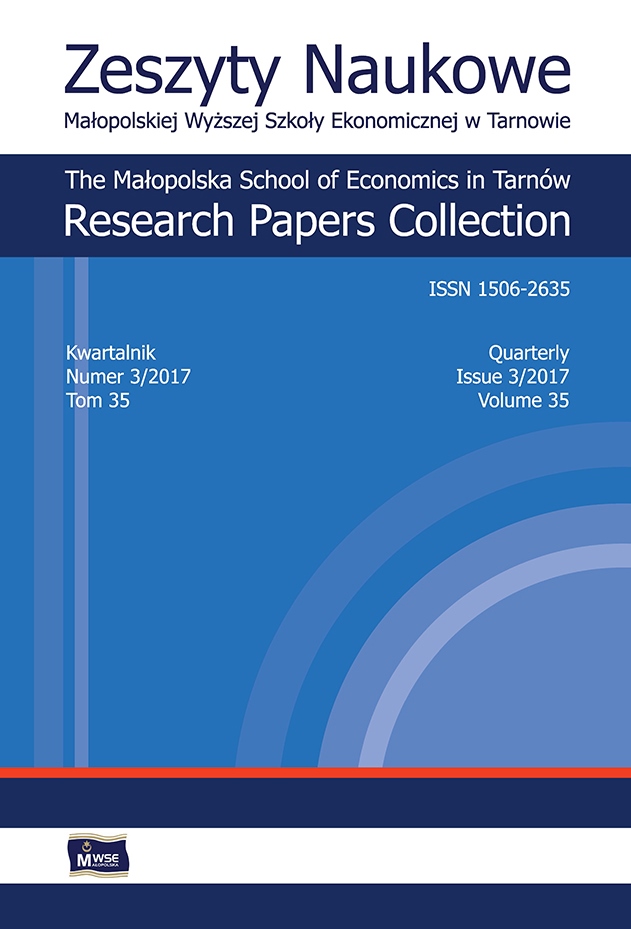Abstrakt
Aspekty estetyczne są rzadko poruszane w literaturze i badaniach ergonomicznych, stanowiąc zazwyczaj końcowe uzupełnienie w omawianych tematach. Ta sytuacja jest znacznym uproszczeniem zakresu współczesnego oddziaływania estetyki na aktywność i percepcję człowieka początku XXI stulecia w krajach wysoko rozwiniętych. Wraz ze wzrostem zamożności aspekt estetyczny zaczyna nabierać znaczenia w priorytetach inwestorów. Ta sytuacja jest już od dawna dostrzegalna w budownictwie biurowym, w którym dobra lokalizacja, ciekawe otoczenie i stosowne „towarzystwo”, atrakcyjna forma i gustowny detal architektoniczny stanowią widoczny znak pozycji firmy, a więc element reklamy i wyznacznik statusu oraz pozycji rynkowej. Architektura obiektów biurowych była zatem od początku ich powstania ciekawa, często awangardowa, podkreślała prestiż i demonstrowała wysoką jakość sztuki budowania. Ten poziom zależy od wielu czynników, ale można wykazać, że jakość budynków będących siedzibami firm idzie w parze z poziomem rozwoju, z ogólną zamożnością i nie tylko wyraża poziom jakości estetycznej, ale ma też wkład w standard przestrzeni pracy. Pogląd ten starano się udowodnić na przykładzie czterech obiektów biurowych powstałych w podobnym czasie, z podobnym odniesionym sukcesem rynkowym, ale w krajach o różnym poziomie rozwoju, to znaczy na przykładzie budynków z: Krakowa, Warszawy, Paryża i spod Oslo.
Bibliografia
Bańka, J. (1976). Humanizacja techniki. Główne zagadnienia i kierunki eutyfroniki. Katowice: Wydawnictwo Śląsk.
Zobacz w Google Scholar
Bańka, J. (1990). Cywilizacyjne skutki komputeryzacji w świetle filozofii techniki. Ergonomia, 13(1), 24–36.
Zobacz w Google Scholar
Franus, E. (1992). Struktura i ogólna metodologia nauki ergonomii. Kraków: Universitas.
Zobacz w Google Scholar
Gorczyca, J. (red.). (2017). Polski rynek biurowy wydanie 2017: inwestycje, architektura, produkty. Kraków: KRN Media Sp. z o.o.
Zobacz w Google Scholar
Jastrzębowski, W.B. (1857). Rys Ergonomji, czyli nauki o pracy, opartej na prawdach poczerpniętych z Nauki Przyrody. Przyroda i Przemysł, 29, 32.
Zobacz w Google Scholar
Juzwa, N., Gil, A., Sulimowska-Ociepka, A., Witeczek, A. (2010). Architektura i urbanistyka współczesnego przemysłu. Gliwice: Wydział Architektury. Politechnika Śląska. ISBN 9788392640226.
Zobacz w Google Scholar
Lisowski, B. (1990). Stan istniejący i postulowany w architekturze końca XX wieku. Kraków: Politechnika Krakowska.
Zobacz w Google Scholar
Szparkowski, Z. (1999). Architektura współczesnej fabryki. Warszawa: Oficyna Wydawnicza Politechniki Warszawskiej. ISBN 8372071667.
Zobacz w Google Scholar
Taczalska, A. (2016). Architektura współczesnych budynków biurowych w Polsce, ze szczególnym uwzględnieniem Krakowa i Warszawy – aspekt środowiska miejsc pracy na tle tendencji europejskich. Dysertacja doktorska. Kraków: Politechnika Krakowska.
Zobacz w Google Scholar
Tatarkiewicz, W. (1985). Historia estetyki. T. 1. Estetyka starożytna. Warszawa: Arkady.
Zobacz w Google Scholar
Tatarkiewicz, W. (1988a) Dzieje sześciu pojęć – sztuka, piękno, forma, twórczość, odtwórczość, przeżycie estetyczne. Warszawa: Państwowe Wydawnictwo Naukowe.
Zobacz w Google Scholar
Tatarkiewicz, W. (1988b). Historia estetyki. T. 2. Estetyka średniowieczna. Warszawa: Arkady.
Zobacz w Google Scholar
Tatarkiewicz, W. (1991). Historia estetyki. T. 3. Estetyka nowożytna. Warszawa: Arkady.
Zobacz w Google Scholar
Wilkinson, Ph. (2011). 50 teorii architektury, które powinieneś znać. Tłum. K. Knap-Paszkowska. Warszawa: Wydawnictwo Naukowe PWN. ISBN 9788301167271.
Zobacz w Google Scholar
Zawada-Pęgiel, K., Złowodzki, M. (2015). The architecture of wine manufacturing and commercial sites in Central Europe. Czasopismo Techniczne. Architektura, 112(10-A), 73–95.
Zobacz w Google Scholar
Złowodzki, M. (2008). O ergonomii i architekturze. Kraków: Wydawnictwo Politechniki Krakowskiej. ISBN 9788372424662.
Zobacz w Google Scholar
Złowodzki, M. (2013). Changes in the paradigm of locating offices in post-industrial cities exemplified by Paris. Czasopismo Techniczne. Architektura, 110(1-A), 165–193.
Zobacz w Google Scholar
Złowodzki, M., Ogińska, H., Juliszewski, T., Pawlak, H. (red.). (2012). Ergonomia w warunkach gospodarki opartej na wiedzy. Kraków–Lublin: Komitet Ergonomii PAN. ISBN 9788393671007.
Zobacz w Google Scholar
© Copyright by Małopolska Wyższa Szkoła Ekonomiczna w Tarnowie. Artykuły są udostępniane na podstawie Creative Commons Attribution Uznanie autorstwa - Użycie niekomercyjne - Bez utworów zależnych 4.0 Licencja Międzynarodowa


